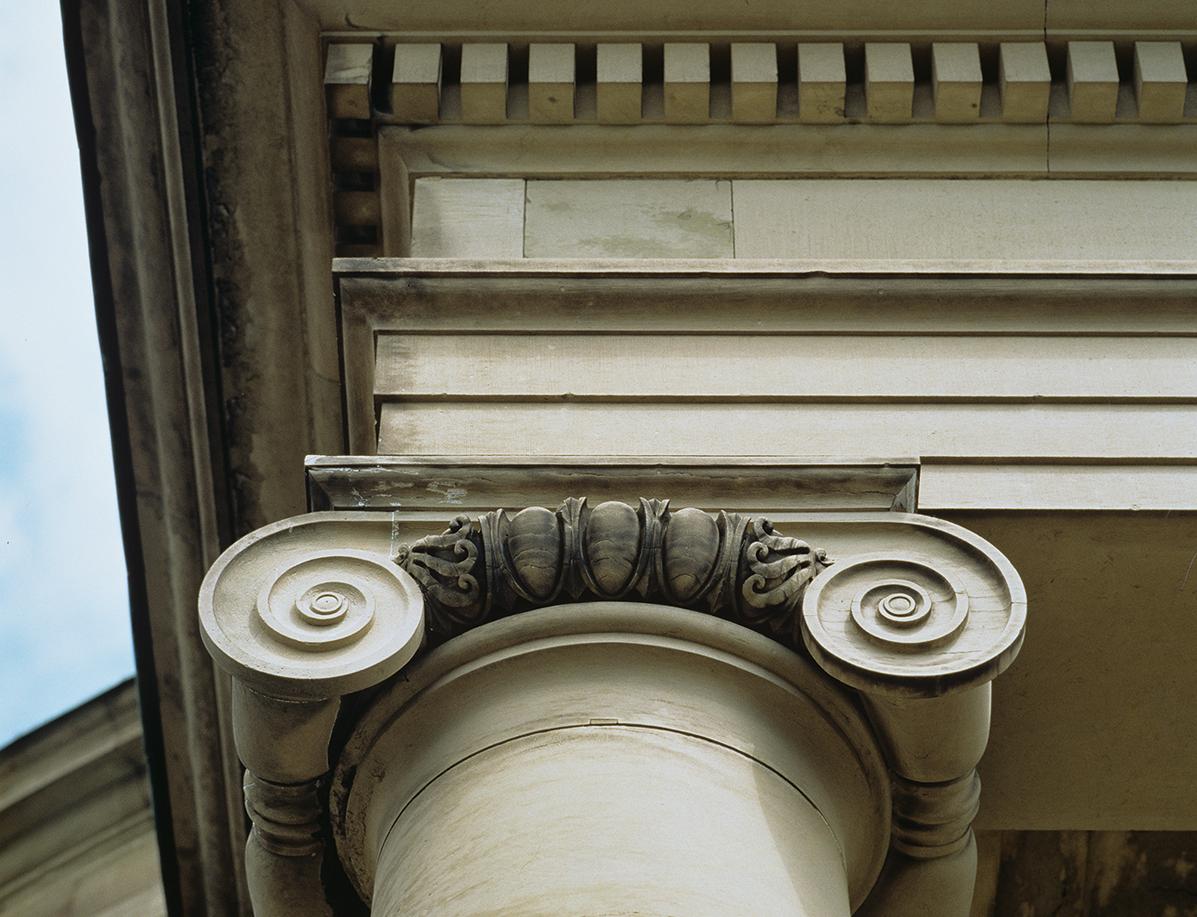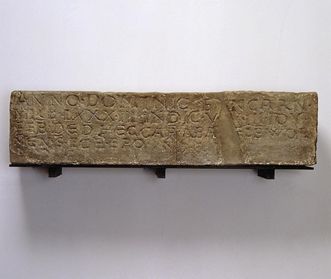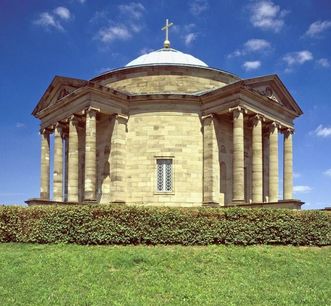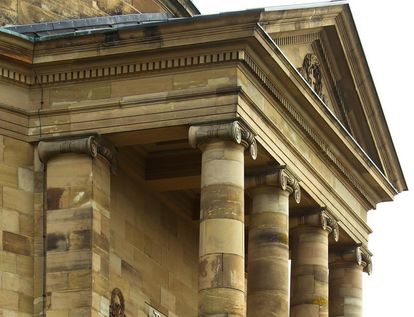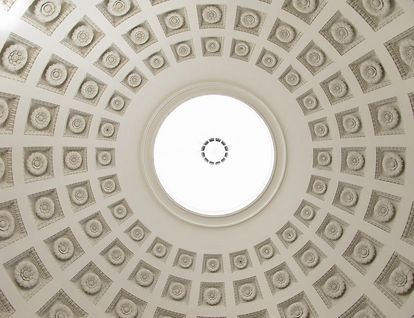MIDDLE AGES
The sepulchral chapel stands on a historically significant spot, the site of the Württemberg's ancestral castle. The last remnant of the castle is the dedication stone from the castle chapel. According to the inscription, the castle chapel was dedicated in 1083, making the stone the oldest evidence of the House of Württemberg. The castle was destroyed in 1311 and rebuilt soon thereafter. Shortly before being torn down, it consisted of a rampart and moat, a triple ring wall, the residential hall and other agricultural and auxiliary buildings.



